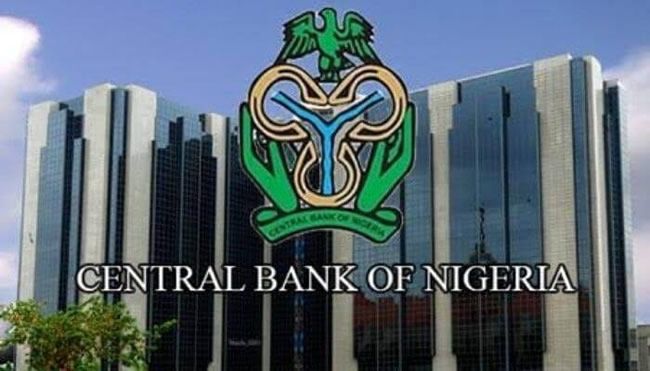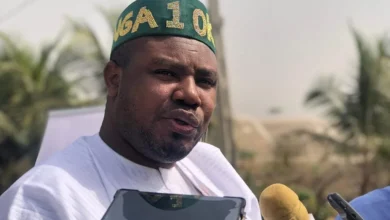
The Central Bank of Nigeria (CBN) recorded a sharp contraction of ₦4.145 trillion in net loans and receivables in 2024, a shift largely attributed to reduced overdraft exposure to the Federal Government and broader restructuring within its credit portfolio.
According to the apex bank’s recently released audited financial statements, net loans at the bank level fell from ₦16.122tn in 2023 to ₦11.977tn in 2024. Similarly, group-level figures declined from ₦15.091tn to ₦10.959tn, marking a ₦4.132tn drop.
The largest adjustment came from a steep cutback in the controversial Ways and Means overdraft facility extended to the Federal Government. The facility, which enables the CBN to offer temporary funding to the government, is governed by Section 38 of the CBN Act, 2007 and limits borrowing to 5% of the previous year’s revenue. However, this threshold was exceeded under the previous administration, prompting widespread concern over monetary policy independence and inflationary risk.
In response, the National Assembly approved the securitisation of ₦22.7tn in Ways and Means advances in 2023, effectively converting the overdrafts into long-term debt instruments. The government has since repaid ₦7.3tn, in line with a renewed commitment to curb reliance on central bank financing.
As a result, the Ways and Means balance dropped drastically from ₦7.948tn in 2023 to ₦3.268tn in 2024, representing a ₦4.679tn or 59% decrease. Earnings from this facility also plunged from ₦1.6tn to just ₦3.1bn.
This fiscal tightening aligns with CBN Governor Yemi Cardoso’s reformist agenda, which aims to unwind what he described as an unsustainable interventionist finance model inherited from the past.
Tightening the Belt Across the Board
Beyond Ways and Means, the bank’s broader loan structure also saw a realignment. The Standing Lending Facility (SLF), used to address liquidity shortfalls among banks, ballooned from ₦29.4bn in 2023 to ₦386.9bn in 2024 a sign of revived activity in the interbank space. Meanwhile, long-term loans rose by ₦712.7bn, reaching ₦2.722tn, suggesting continued CBN engagement in strategic, longer-tenure financing.
In contrast, the much-criticised development finance interventions saw sustained contractions. Intervention loans dropped by ₦253bn at the bank level to ₦3.083tn, and by ₦224.6bn at group level to ₦1.658tn.
Notably, the Anchor Borrowers’ Programme, which has been marred by repayment issues and a lack of transparency, recorded a significant recovery. At the group level, balances declined from ₦424.8bn to ₦311.9bn a repayment of ₦112.9bn. The Commercial Agricultural Credit Scheme and Real Sector Support Facility also posted recoveries of ₦43.3bn and ₦37.5bn, respectively.
Cleaning House: Legacy Loans, Debentures, and Risk Controls
Several other facilities were either repaid or written off:
- The NESI Stabilisation Strategy Limited Debenture, used to stabilize the power sector, was fully cleared (₦9bn in 2023 to zero in 2024).
- Promissory Notes valued at ₦03bn were also fully paid off.
- The Accelerated Agricultural Development Scheme balance shrank by ₦38bn to just ₦990m.
- The Perpetual Debenture dropped by ₦55bn, from ₦4.79bn to ₦1.25bn.
Meanwhile, some items remained steady or posted minor changes. Staff loans increased modestly to ₦65.6bn, Nigerian Treasury Bonds remained flat at ₦423m, and Micro, Small and Medium Enterprises (MSME) loans were stable at around ₦442.7bn.
Gross loans fell from ₦16.39tn to ₦12.77tn at group level and from ₦17.42tn to ₦13.78tn at bank level. At the same time, the allowance for Expected Credit Losses rose significantly from ₦1.3tn to ₦1.8tn, signaling tighter credit risk management.
Cardoso’s Policy Shift: “No More Failed Interventions”
Speaking earlier this year at his first Monetary Policy Committee (MPC) briefing, CBN Governor Cardoso made it clear that the days of unchecked development financing were over.
“The interventions that took place in the recent past were estimated in excess of ₦10tn. That’s larger than some state budgets combined,” he said. “It creates distortions and undermines monetary policy effectiveness.”
He continued, “We are no longer pursuing interventions that have high failure risks or those that don’t reach their intended beneficiaries. What’s out there must be monitored, recovered, and accounted for. That’s already underway.”
A New Fiscal Era?
The 2024 financial statement reflects a dramatic pivot in monetary and fiscal discipline, with the CBN actively working to reduce systemic risk, clean up its balance sheet, and restore its focus on core central banking functions.
Although the withdrawal from interventionist lending remains a subject of debate, the numbers suggest a renewed drive toward fiscal responsibility, policy credibility, and a healthier financial ecosystem.





